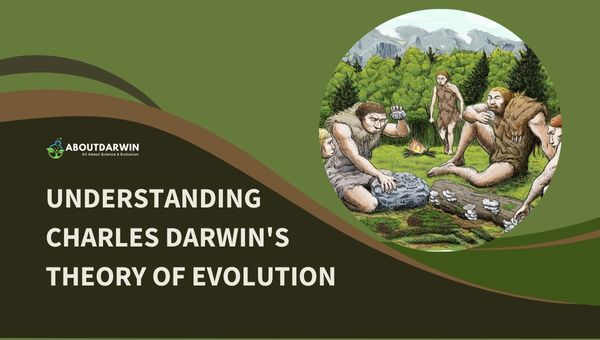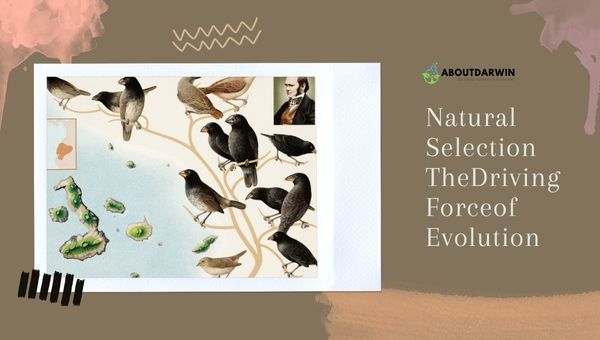Physical Address
304 North Cardinal St.
Dorchester Center, MA 02124
Charles Darwin’s theory of evolution revolutionized our understanding of the natural world, presenting a compelling narrative of life’s intricate tapestry. At its heart lies natural selection, a process that explains how species adapt and evolve over generations.
This groundbreaking theory not only challenged established beliefs but also opened doors to countless scientific inquiries.
As we explore the depths of Darwin’s insights, we uncover the mechanisms that drive the diversity of life, revealing a dynamic interplay between organisms and their environments. The implications of this theory resonate across biology, medicine, and our societal views on existence.
Contents
When I first explored Charles Darwin’s theory of evolution, I discovered a profound explanation for the incredible diversity of life on Earth.

At the heart of Darwin’s theory lies the concept of natural selection, a process that governs how traits are passed down through generations, shaping the evolution of species.
To fully understand natural selection within the context of Darwin’s theory, it’s essential to focus on the following key principles:
Natural selection favors certain traits over others, gradually influencing the composition of populations. Over successive generations, advantageous traits become more common, leading to the evolution of species.
It’s important to remember that Charles Darwin’s theory of evolution, particularly in his seminal work On the Origin of Species, sparked considerable controversy when first introduced in the mid-19th century.
Critics resisted the notion that species could evolve so dramatically through natural processes, advocating for a more fixed view of nature.
However, over time, a wealth of evidence has emerged to support Darwin’s theory of evolution. Findings from various scientific fields, including genetics and paleontology, have provided compelling evidence of evolution. Some key examples include:
Through the lens of Charles Darwin’s theory of evolution, the breathtaking complexity of life on Earth can be understood as the result of gradual, natural processes that have shaped the diversity of species over millions of years.
Also Read: All Books by Charles Darwin
Natural selection is the key mechanism that drives evolution, helping species adapt to their environments and resist extinction. I’ll discuss this process and its significance in the context of Charles Darwin’s groundbreaking theory of evolution.

To get started, let me explain natural selection in a nutshell. It’s the process in which specific traits – which make certain individuals more adaptable to their environment – become more prevalent within a population over time. We can break this down into three basic principles:
A classic example of natural selection in action is the peppered moth in the UK. Through a series of events, Light and dark-colored moths showed different rates of survival and reproduction:
Apart from this example, there are countless other instances of natural selection at work in various species. A few notable examples include:
Natural selection contributes to speciation, the formation of new and distinct species. When populations face new environmental challenges or become isolated, natural selection favors different traits in each group, leading to the emergence of unique species over time.
In my exploration of Charles Darwin’s theory of evolution, it’s become clear that natural selection is the primary force driving evolutionary change. As a result, understanding this process is crucial for grasping the complexity and diversity of life on Earth.
Also Read: Ideas About Evolution Before Charles Darwin
Despite its foundational role in biological sciences, the theory of evolution, particularly as articulated by Charles Darwin, has encountered numerous critiques and misunderstandings.

These misconceptions often arise from a lack of clarity regarding key concepts such as “fitness,” the nature of natural selection, and the relationship between evolution and religious beliefs.
Addressing these misunderstandings is crucial for a comprehensive understanding of evolutionary theory and its implications for the diversity of life on Earth.
These critiques and clarifying these misconceptions enhances our appreciation of Darwin’s theory of evolution and natural selection as powerful explanations for biological diversity.
Recent advancements in evolutionary biology have significantly enhanced our understanding of the Theory of Evolution, particularly Darwin’s theory of natural selection.
The discovery of epigenetics has added another layer of complexity to evolutionary theory. It refers to changes in gene expression that don’t alter the DNA sequence itself but are still passed down to future generations.
This has shown us that the environment can significantly impact an organism’s gene expression, contributing to adaptive changes across generations.
Here’s a table summarizing the key developments in evolutionary biology:
| Key Development | Description |
|---|---|
| Central Dogma of Molecular Biology | Describes the flow of genetic information from DNA to RNA to protein, linking genetic sequences to phenotypes. |
| Epigenetics | Explores changes in gene expression that do not alter DNA sequences but can be inherited, influenced by environmental factors. |
| Genetic Drift | Highlights random variations in gene frequencies within populations, affecting genetic diversity and allele fixation/loss. |
| Genomic Data | Advances in DNA sequencing have led to a wealth of genomic information, aiding the identification of critical genes and pathways. |
| Comparative Genomics | Compares genomes of related species to reveal similarities and differences, providing insights into shared ancestry and evolutionary relationships. |
| Computer Simulations | Uses algorithms to model evolutionary processes, allowing predictions of outcomes based on varying scenarios such as selective pressures and mutation rates. |
These developments collectively deepen our understanding of evolutionary mechanisms and underscore the dynamic nature of species evolution.
The Theory of Evolution has had far-reaching impacts on various fields of science and society as a whole. Let’s take a closer look at some of these implications.
First, in biology, it’s undeniable that the theory of evolution has significantly advanced our understanding of the natural world. It has shed light on the origins of species and the mechanisms through which they adapt and diversify over time. Specifically, Darwin’s ideas have:
Another area where the theory of evolution has been influential is in medicine. By recognizing the interconnectedness of life and the fundamental principles that govern biological systems, researchers have made significant progress in:
The implications of the theory of evolution truly extend beyond science, having made a mark on society and culture as well. Perhaps most significantly, it has shifted our understanding of what it means to be human. Key societal implications include:
| Area of Impact | Effect |
|---|---|
| Biology | Advancing knowledge of the natural world |
| Medicine | Improving treatments and understanding of disease |
| Society & Culture | Impacting worldview and ethical considerations |
Despite its far-reaching implications, it’s essential to acknowledge that the theory of evolution remains just that – a theory. While a wealth of evidence supports it and is widely accepted within the scientific community, it’s vital to maintain an open-minded approach in the pursuit of knowledge. After all, scientific understanding continues to evolve, much like the natural world it seeks to explain.
The insights gained from Darwin’s theory of evolution have profoundly shaped our understanding of biological diversity and the process of natural selection.
By illustrating how species adapt over time to their environments, this theory provides a scientific framework for studying life on Earth. The implications extend beyond biology, influencing fields such as genetics, ecology, and anthropology.
Embracing Darwin’s principles encourages a deeper appreciation for the intricate relationships within ecosystems and the ongoing changes that define the natural world. Ultimately, his work remains a cornerstone of modern science, inspiring continued exploration and discovery.